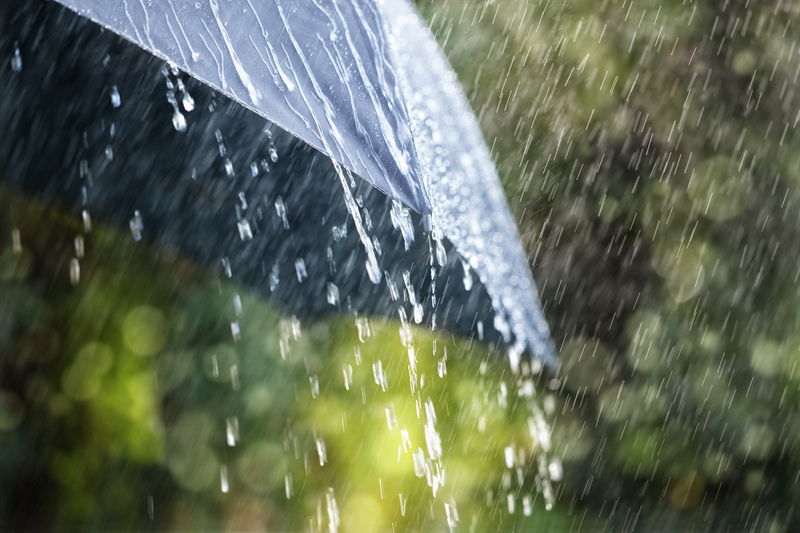Effective Methods for Storing an Idle Freezer
Posted on 08/06/2025
Effective Methods for Storing an Idle Freezer
Having an extra freezer can be highly beneficial for families, food businesses, and hunting enthusiasts. However, there may come a time when you need to store your freezer while it's not in use. Whether you are renovating, moving, or simply need to free up space, properly storing an idle or unused freezer is essential. Failing to do so can lead to unwanted odors, mold growth, damage, and even mechanical issues. In this comprehensive guide, we outline the best practices and effective ways for storing an idle freezer safely and efficiently.

Why Proper Storage of an Idle Freezer Matters
Before delving into the step-by-step process, it's important to understand the risks of improper freezer storage. Leaving a freezer idle without proper preparation can lead to:
- Mold and mildew growth caused by residual moisture inside.
- Persistent odors that are difficult to remove.
- Mechanical damage from improper cleaning or storing in unsuitable environments.
- Rust and corrosion of internal and external components.
- Inefficiency or failure to function properly when reconnected.
By implementing the best practices for idle freezer storage, you can significantly prolong its lifespan, ensuring it stays clean, safe, and ready for use when needed.
Step-by-Step Guide to Storing a Freezer When Not in Use
1. Remove All Contents
The first step is to completely empty your freezer. Remove all food items and detachable storage baskets or shelves. Allow the interior to return to room temperature if frost or ice has accumulated.
- Dispose of expired or unwanted food appropriately.
- Consider using up or donating perishable items before shutting the freezer down.
- Take care while removing glass or plastic compartments to avoid damage.
2. Defrost the Freezer Thoroughly
Leaving frost or ice inside can result in water damage and encourage mold growth. Here's how to safely defrost your unit:
- Unplug the freezer from the electrical outlet.
- Open the door and allow ice or frost to melt naturally or speed up the process with a bowl of hot water placed inside.
- Use towels to absorb melting water, preventing seepage under the unit.
- Never use sharp tools to scrape off the ice, as this can damage the interior.
Tip: Position the freezer in a well-ventilated area during defrosting to minimize humidity inside your home.
3. Clean and Sanitize the Interior
After defrosting, cleaning is crucial for storing a freezer safely.
- Mix a solution of baking soda and warm water (around 2 tablespoons per quart of water).
- Wipe down every surface inside the freezer: sides, shelves, baskets, and gaskets.
- For tough stains or lingering smells, use a diluted vinegar solution or commercial appliance cleaner.
- Pay special attention to door seals because these can harbor mold and mildew.
- Dry all components thoroughly with a clean towel to eliminate moisture.
4. Prepare the Exterior
- Wipe down the outside with mild soap and water.
- Clean condenser coils (if accessible) using a soft brush or vacuum to remove dust buildup, improving performance when it's back in use.
- Check for and treat any signs of rust on the exterior with proper rust-removing products.
- Ensure the feet or base are dry to prevent rusting during storage.
5. Leave the Freezer Door Slightly Open
Closing the door during storage is a big mistake. Sealing the freezer can trap moisture inside, creating a prime environment for bacteria and odors. Instead:
- Leave the door ajar by at least an inch (2-3 cm) to allow airflow and prevent mustiness.
- Use a soft object, like a rolled towel or wedge, to keep the door open without straining the hinges.
- Some models have built-in spacers or locks designed for this purpose. Consult the manufacturer's manual for advice.
6. Protect the Power Cord
- Unplug the freezer and clean the cord if necessary.
- Coil the power cord loosely and secure it with a soft tie.
- Avoid placing it on the ground where it might accumulate dust or moisture.
- Store the plug in a plastic bag and tape it to the back of the unit for protection and easy access.
7. Choose the Right Storage Location
The location for idle freezer storage is key. Environment plays a significant role in keeping your appliance well preserved.
- Store in a dry environment, sheltered from rain, snow, and excessive humidity.
- Garages, basements, or utility rooms can work, provided they are not prone to dampness.
- Avoid direct sunlight or exposure to extreme temperatures as freezing and overheating can damage internal components.
- Leave ample space around the freezer for air circulation (at least 2-3 inches on all sides).
- Keep the freezer elevated on a pallet or platform to prevent accidental water damage from floor moisture.
For long-term storage (over 6 months), consider using a climate-controlled storage unit to guarantee moisture and temperature stability.
8. Maintain a Pest-Free Environment
- Store the freezer in an area free from rodents or insects.
- Check for entry points or cracks in the storage location and seal them to prevent pests from nesting inside the unit.
- Sprinkle some baking soda inside to repel pests and absorb odors.
9. Check and Maintain Regularly
Even while idle, your freezer still needs periodic attention.
- Inspect the unit every few weeks or months for signs of moisture, mold, or unwanted smells.
- Ensure the door remains slightly open and the power cord is undamaged.
- If necessary, re-clean and place fresh baking soda inside.
- Address any leaks, pest activity, or emerging rust immediately.
Extra Tips for Long-term Idle Freezer Storage
- Use Moving Blankets or Covers: Protect the exterior from scratches, dust, and impacts using a breathable cover--not plastic, which can trap condensation.
- Mark or Label: Clearly label the unit as 'Clean and Ready for Future Use' to avoid confusion or accidental plugging in.
- Keep Manuals and Parts: Tape the manual and any detachable small parts (like ice trays) to the inside of the freezer or keep them nearby for easy access.
- Insurance: If you are keeping your freezer in paid storage, check with your facility or insurance provider about coverage for stored appliances.
Common Mistakes to Avoid When Storing a Freezer
- Never store a freezer that's unplugged and closed tight; this is the most common cause of mold and foul odors.
- Don't place heavy items on top, which could damage the lid or door over time.
- Avoid wrapping the unit in plastic; always use breathable materials.
- Don't skip routine checks, as problems inside the freezer can develop unnoticed for months.
- Do not store near hazardous chemicals, which could corrode the exterior or pose fire hazards.
Returning Your Idle Freezer to Active Use
When you're ready to use your freezer again after a period of idle storage, take the following steps:
- Remove any covers and check for pests, debris, or foreign objects.
- Clean and air out the interior again, as odors may have developed over time.
- Inspect the seals and gaskets to ensure elasticity and no signs of wear.
- Plug in the unit and let it run empty for several hours to ensure it reaches the correct internal temperature before adding food.
- If any mechanical issues arise, schedule a professional checkup before resuming full use.

Frequently Asked Questions About Storing Idle Freezers
How long can a freezer remain unused?
If stored properly, a freezer can remain unused for several years without damage. However, regular checks--at least every few months--are highly recommended.
Should I store my freezer upright or lying down?
Always store your freezer upright. Laying a freezer on its side can cause oil to drain into components where it doesn't belong, potentially damaging the compressor.
Is it better to keep a freezer plugged in or unplugged while storing?
Unplug the freezer to save energy and prevent electrical hazards, but make sure to leave the door open and dry.
Can I store a freezer outside?
This is not recommended unless the freezer is specifically designed for outdoor conditions. Moisture, sun, and extreme temperatures can damage the appliance.
What is the best way to prevent odors during freezer storage?
Thorough cleaning, drying, and storing with an open door plus a box of baking soda or charcoal inside will help prevent odors from forming.
Conclusion: Optimizing Freezer Storage When Not in Use
Knowing how to store a freezer when idle is crucial for preserving its functionality and value. By following the steps above--emptying and cleaning it thoroughly, keeping it dry with the door ajar, and storing it in a safe environment--you ensure your freezer stays in optimal condition. Regular inspections and responsible placement minimize risks, so your freezer will be ready for action when you need it again. Maintain these practices, and enjoy years of reliable service from your appliance.
Remember: A bit of care now in storing your idle freezer can prevent costly repairs or replacement down the road, keeping your investment protected and prolonging its useful life.







